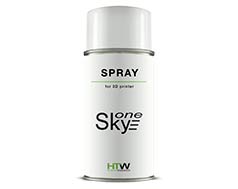3D printing materials (filaments) and accessories
"A 3D printer is good for someone, who posesses it and it is poorly for someone, who failed to get it... at proper time". Let's assume, you have got it, and it is the proper time... The daughter howls and crying a crocodile, or the last glass is broken, or it is needed a pinion gear, pulley, cross over flange or a dust guard for the favorite car. In other words, something became necessary. And that's more a 3D model of this "something" is ready - prepared/bought/downloaded (underline as necessary). The last (but not simple) question remains - which filament for 3D printing to use.
Improperly choosed filament (3D printing plastic) could play a low-down trick. As an example, if pour wine (or other alcoholic drink) to a glass made from ABS plastic, as a result of a chemical reaction styrole (mutagene and cancerogene) will be evolved. Or if a flower will be planted to a flowerpot made from PLA filament, you finally will be surprised when will find it not in a the pot on a window sill, but directly on an expensive carpet. So it is important to pay attention to the properties of choosed filament and check if it is suitable for the requested object.
Main selection criteria
In the course of selection of consumable materials it is important to understand how one plastic type differs from another. Rightfull recognition of plastic properties delivers lasting result and gives most preferable product with high wear resistance. Lets look through the most popular plastics from an everyman point of view, skiping technical details.
ABS filament
It is one of the most requested plastic types in modern 3D technologies. Thermal resistance and high strength of final products could be surely called as an advantages of ABS plastic. Goods made from are be commonly found around. ABS is suitable for production of tooth wheels, brackets, cases for electronic devices. ABS plastic is characterized by high fusioning temperature, that means an extruder should be longer heated. The recommended working temperature range for that plastic is 210 - 270 degrees.
HTW SBS+ filament
It is a thermal resistant plastic with low temperature shrinkage factor, which doesn't require a protective screen to be used. Printing with HTW SBS+ plastic is so simple as with PLA pastic.
HTW P-Carbon filament
This plastic is a wear resistant, with a low constant of friction. It is an analog of caprolon. Low frinkage of P-Carbon plastic doesn't require temperature stabilization of a printing area.
PLA filament
Products made from PLA plastic comes more smooth and glossy. Fusioning temperature PLA is lower than ABS, it gives an opportunity to avoid arising of a smell during printer operation. It is worth to mention that PLA is a biodegradable plastic. First of all it has an impact on a lifetime of a final product. At an average, lifetime of a model made from PLA is about 2 years on condition of a using at room temperature. The working temperature range for this material is 190 - 230 degrees.
FLEX filament
Signature feature of FLEX plastic is flexibility. FLEX come into common use due to chemical resistance (oils, benzine, solvents). Flex is characterized by long lifetime and is resistant to physical impacts.
RUBBER filament
Structurally RUBBER plastic is nearly identic to rubbert. This material is also resistant to chemical impacts. So this plastic is used for printing of goods for industrial and everyday spheres with a long life-time.
CRYSTAL filament
As against analogs, CRYSTAL plastic is more transparent and characterized by high light-transmission factor. This material is resistant to physical impacts and perfectly suits for creating of small size objects. CRYSTAL is non toxic and may be used for food and medical fields.
Filament diameter
The most of modern 3D printers are designed for plastic fiaments with diameter 1.75 or 3 mm. In the course of plastic selection, the filament diameter appears as a secondary criterion, as it less affects on a quality and lifetime of goods.
Our specialists are always ready to render knowledgeable assistance in selection of plastics and accessories for 3D printers.
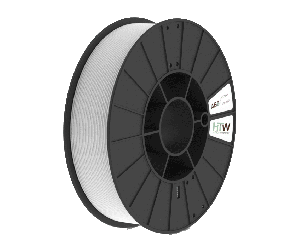
ABS filament for 3D printing
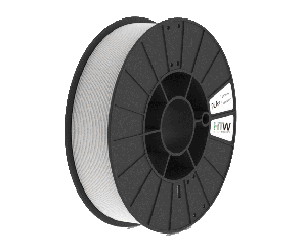
PLA+ filament for 3D printing
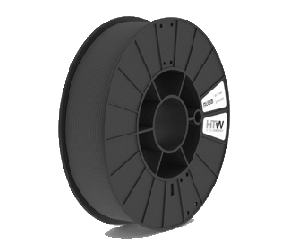
HTW SBS+ filament
- Engineering plastic
- Fully-featured substitution for ABS plastic
- Printing repeatability
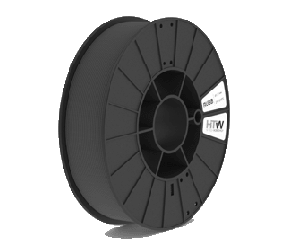
HTW P-Carbon filament
- An alternative to nylon
- Chemical resistance
- Low constant of friction
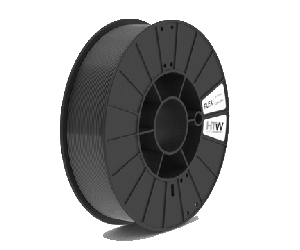
FLEX filament (flexible plastic for 3D printing)
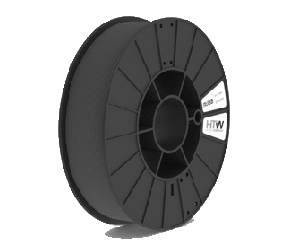
RUBBER filament (rubber plastic for 3D printing)
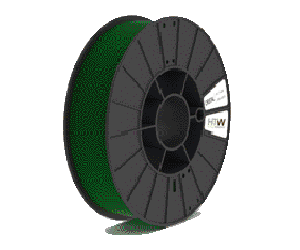
CRYSTAL filament
